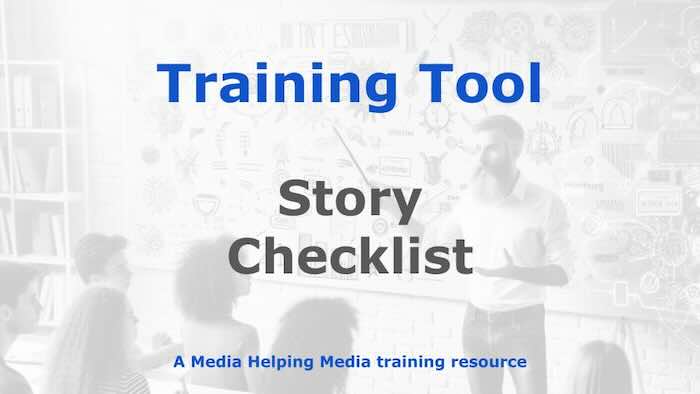 The following is a structured checklist tool for journalists to consider in order to ensure they produce strong news stories.
The following is a structured checklist tool for journalists to consider in order to ensure they produce strong news stories.
It’s been created by bringing together suggestions from professional journalists in the Media Helping Media network. Feel free to use this checklist to ensure your story is well-researched, compelling, and impactful.
Journalist’s news story checklist
- Research & preparation
- Identify the news angle – Why is this story important?
- Verify all facts, names, dates, and locations.
- Gather background information and context.
- Consult multiple credible sources for diversity of perspectives.
- Interviews & sources
- Identify key sources (experts, eyewitnesses, officials, etc.).
- Prepare thoughtful, open-ended questions.
- Record and take notes accurately.
- Fact-check and confirm quotes.
- Maintain ethical sourcing and attribution.
- Writing & structure
- Craft a compelling lead (who, what, when, where, why, how).
- Organise information in an inverted pyramid format (most important details first).
- Ensure clarity, accuracy, and conciseness.
- Provide context and background without overwhelming the reader.
- Use active voice and strong verbs.
- Avoid adjectives and adverbs.
- Editorial ethics
- Avoid bias and present all relevant viewpoints.
- Disclose any potential conflicts of interest.
- Read: Integrity in journalism
- Protect confidential sources when necessary.
- Ensure quotes and data are not taken out of context.
- Read: Fairness in journalism
- Multimedia & presentation
- Include relevant photos, videos, audio, infographics, or charts.
- Verify image sources and obtain proper permissions.
- Write clear, engaging captions.
- Read: The power of words
- Editing & accuracy check
- Proofread for grammar, spelling, and typos.
- Read: Grammar for journalists
- Read: How to spot your own mistakes
- Verify all facts, names, and figures again.
- Cross-check sources and citations.
- Ensure hyperlinks (if applicable) are correct.
- Get feedback from an editor or colleague.
- Proofread for grammar, spelling, and typos.
- Publishing & distribution
- Select the right platform (print, online, TV, radio, social media).
- Optimise for SEO (search engine optimisation) and social sharing (if digital).
- Add relevant tags, categories, and metadata.
- Monitor audience engagement and be ready to update or correct if needed.
This checklist helps ensure a well-rounded, ethical, and impactful news story.








